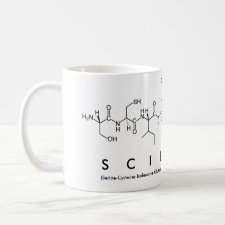
Authors: Omranipour HM, Tabassi SAS, Kowsari R, Rad MS, Mohajeri SA
Article Title: Brimonidine Imprinted Hydrogels and Evaluation of Their Binding and Releasing Properties as New Ocular Drug Delivery Systems.
Publication date: 2015
Journal: Current Drug Delivery
Volume: 12
Issue: (6)
Page numbers: 717-725.
DOI: 10.2174/1567201812666150316110838
Alternative URL: http://benthamscience.com/journal/abstracts.php?journalID=cdd&articleID=129513
Abstract: Molecular imprinting is a technique for preparation of specific polymeric receptors for recognition and selective binding of chemicals. Recently, molecularly imprinted soft contact lenses have been studied as novel ocular drug delivery systems. The aim of this work was to prepare, for the first time, a brimonidine (BRN) imprinted soft contact lens material and study of its binding and releasing properties in aqueous media. The hydrogels were prepared using hydroxyethyl methacrylate (HEMA) as a backbone monomer, methacrylic acid (MAA), methacrylamide (MAAM) and 4-vinylpyridine (4VP) as the functional monomers and ethylene glycol dimethacrylate (EGDMA) as a cross linker monomer. Different BRN: MAA molar ratios were also applied in feed composition of monomers to study the influence of molecular imprinting technique on their binding properties. The hydrogels were characterized by determination of their swelling and binding properties in water. Their loading and release properties were also studied using Korsmeyer-Peppas equation in normal saline (NaCl 0.9%) and artificial tear solution. Poly (HEMA-co-MAA) showed superior binding properties compared to other copolymers. Also molecular imprinting technique significantly increased the hydrogel affinity to drug. It was found that all molecularly imprinted polymers (MIPs) had higher affinity to BRN in comparison with nonimprinted polymers (NIPs). The optimized MIP hydrogel with BRN: MAA molar ratio of 1: 8 showed greater ability to drug loading and controlled release compared to other MIPs. The results of the present work indicated that molecular imprinting technique had a significant effect on improving loading capacity and sustaining drug release from hydrogels.
Template and target information: brimonidine, BRN
Author keywords: Brimonidine tartrate, hydrogels, molecular imprinting, ocular drug delivery systems, Poly (hydroxyethyl methacrylate)



Join the Society for Molecular Imprinting

New items RSS feed
Sign-up for e-mail updates:
Choose between receiving an occasional newsletter or more frequent e-mail alerts.
Click here to go to the sign-up page.
Is your name elemental or peptidic? Enter your name and find out by clicking either of the buttons below!
Other products you may like:
 MIPdatabase
MIPdatabase









